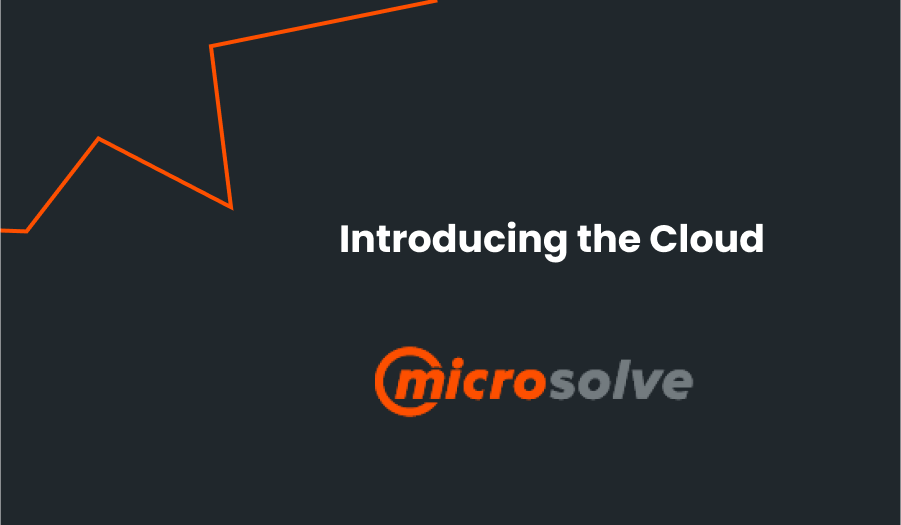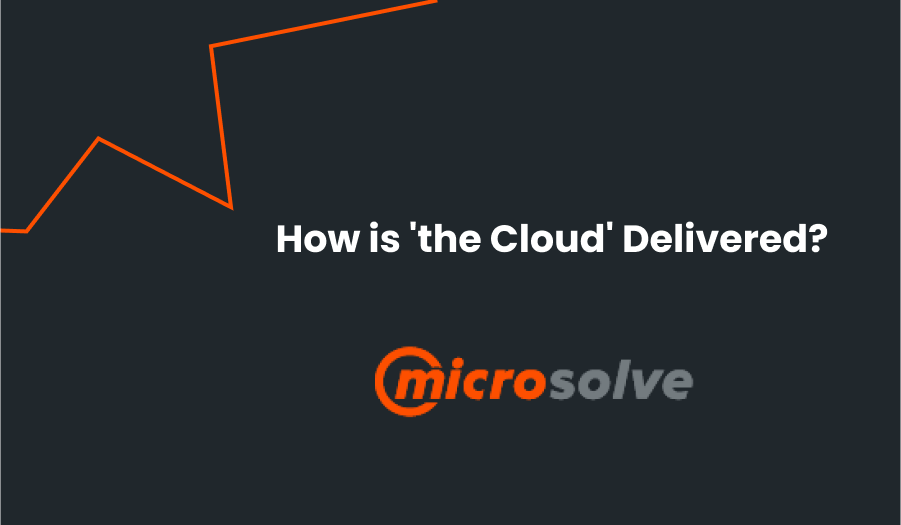Welcome to our 4-part series on ‘the Cloud’. In this four-part series we will look at:
- Introducing ‘the Cloud’
- How is ‘the Cloud’ delivered?
- Why go ‘the Cloud’?
- Questions to ask about ‘the Cloud’
In Information Technology the ‘Cloud’ has long been referred to as something that is unknown or undefined – diagrams will often show the public internet represented by a fluffy cloud and this has led to the idea of something being located in ‘‘the Cloud’’ meaning it is located somewhere ‘out there’.
Cloud computing is a term generally used to refer to having your applications and/or data located outside of your own environment or infrastructure.
Types of Clouds
The term ‘Cloud’ covers a range of different deployment scenarios depending primarily on whether your infrastructure and/or data is located on shared public infrastructure such as Amazon, Google or Microsoft Azure, or if your data is located on privately managed infrastructure external to your organisation.
Private Cloud
A private Cloud is where your data and/or infrastructure is maintained or managed by you or someone else on equipment that is dedicated to your organisation. Examples of this could be hosting your data and applications in a 3rd party data centre or on dedicated servers sourced from a hosting provider such as Amazon or Microsoft Azure.
Access to data and applications in a private Cloud is managed through private networks i.e. information flowing between your systems does not traverse the public internet.
Private Clouds offer far more control over your infrastructure, data and services and as such are especially suited to applications where data security is one of the prime requirements. Private cloud is also an excellent option where your application of choice is not available as SaaS in the public cloud.
Public Cloud
Public Cloud is generally hosted on shared servers and accessed via the public internet. Examples of this would be things like Office 365 and Xero accounting software. With a public Cloud, management and maintenance of the servers and storage is undertaken by the provider of ‘the Cloud’ service rather than your own IT people.
Generally a public Cloud may appear more cost effective than a private cloud since many of the operational costs are shared amongst multiple customers. When comparing public and private cloud costs it is important to consider service levels as public cloud offerings often do not include level 1 or level 2 support and you may need to factor in these additionial support costs as well.
Another important consideration with public cloud is your data backups. Many public cloud offerings backup up their entire infrastructure to allow for recovery in the event of a major system failure, however, these backups do not allow you to restore individual components of your data. This is critical in situations where someone has accidentally deleted or changed the contents of a file. These infrastructure level also backups do not provide for recovery of files that have been locked or modified by Malware such as crypto locker. To protect against these risks you may need to purchase additional backup functionality to allow you to restore individual files from your backup.
Public Cloud may also offer more redundancy by being able to have your data and applications running on servers in different physical locations at significantly less cost than doing the same thing in a private Cloud. Consideration needs to be given to how public cloud redundancy is provided i.e. where are redundant copies of your data stored as often public cloud providers deliver redundancy through infrastructure located offshore and this may have privacy and other implications for your business.
The most commonly raised concern with operating in the public Cloud is data security.
Hybrid Cloud
A hybrid Cloud is, as the name suggests, a mix of both private and public Cloud. For example you may choose to use Office 365 for your email (public Cloud) and use a private hosted environment for your line of business applications that contain sensitive data.
A hybrid model allows you to mix and match to take advantage of the strong points of both private and public Cloud.
In this four-part series we will look at:





